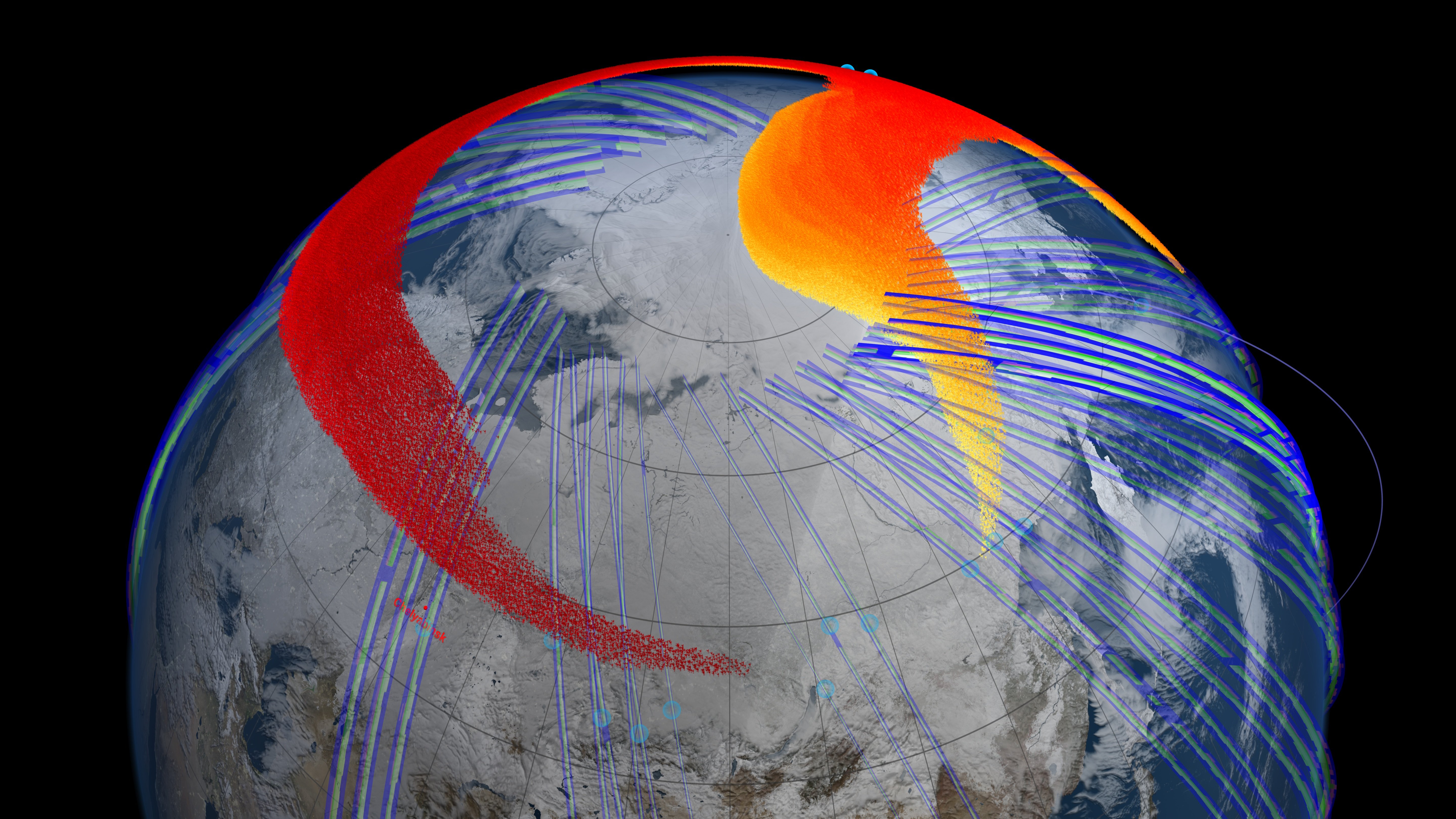It is unclear what the impact will be on the climate, but three and half hours after the initial explosion, NASA’s ozone-mapping satellite detected the plume at 25 miles altitude above the earth’s surface moving at about 190 mph eastward.
According to NASA:
The day after the explosion, the satellite detected the plume continuing its eastward flow in the jet and reaching the Aleutian Islands. Larger, heavier particles began to lose altitude and speed, while their smaller, lighter counterparts stayed aloft and retained speed – consistent with wind speed variations at the different altitudes.
By Feb. 19, four days after the explosion, the faster, higher portion of the plume had snaked its way entirely around the Northern Hemisphere and back to Chelyabinsk. But the plume’s evolution continued: At least three months later, a detectable belt of bolide dust persisted around the planet.
The scientists’ model simulations, based on the initial Suomi NPP observations and knowledge about stratospheric circulation, confirmed the observed evolution of the plume, showing agreement in location and vertical structure.
“Thirty years ago, we could only state that the plume was embedded in the stratospheric jet stream,” said Paul Newman, chief scientist for Goddard’s Atmospheric Science Lab. “Today, our models allow us to precisely trace [the dust from] the bolide and understand its evolution as it moves around the globe.”

Image Credit: NASA Goddard’s Scientific Visualization Studio
Every day we get space debris tens of metric tons of space debris ends up in suspended in the atmosphere. However it is only recently, with better instrumentation and access to more observational opportunities from space, that scientists have been able to get a more accurate reading of what this debris is doing and where it resides in the atmosphere.
The Chelyabinsk meteor, mercifully, was not an earth destroying event giving scientists the opportunity to explore the impact of such events from a safe distance. I guess until we get hit with the big one because the scientists ain’t saying we won’t get hit with a big one. The dinosaur killing kind.






